Construction Safety in the Workplace
Construction safety in the workplace is required by law and is an essential requirement to keep any construction site injury-free and prosperous. Whether you work in an office setting or on a construction site, employees need protection from the various dangers that are present on their job site. This can look like health and safety poster boards, WHMIS and SDS sheets, COVID-19 protocols, a health and safety binder, attending and holding toolbox talks, joint health and safety committee meetings, and keeping track and scheduling workplace safety training as it expires.
Some hazards are prominent and noticeable, but others could be covert by avoiding immediate detection (i.e. no guardrails around the snow-covered skylight on a roof). Safety is everyone’s concern on a job site, so read on to find out what safety training you may need to stay safe in your construction workplace setting.
Safety training reduces workplace injuries & accidents.
An untrained employee presents lots of volatile uncertainty to workplaces. When workers are unfamiliar with existing processes or protocols, they might inadvertently put themselves and others in danger. Inexperienced staff members tend to take unnecessary risks or breach safety guidelines they didn’t know were in place.
The importance of construction safety training in workplaces is to minimize the potential for injuries or accidents. Safety education indicates to employees which risks are present and what actions should be taken. Employee safety training programs help them recognize the various dangers in their line of work, which could include:
- Electrical hazards
- Fire hazards
- Mechanical hazards
- Chemical hazards
- Health hazards
- Material handling hazards
Extensive workplace safety training will enable all staff to become aware of their surroundings. Their knowledge encourages them to watch out for dangerous work practices and report any anomalies immediately. They will also learn proper health and safety procedures if an accident occurs, ensuring the recommended actions are followed.
Safety training teaches the proper use of workplace equipment.
Not all work is done on computers. Some companies use complex machinery that requires additional safety equipment to operate them. However, your employees may not be familiar with all the tools you need them to use. Before using any machinery, ensure your staff understands how to operate the equipment correctly. Even if they have prior knowledge, it is always helpful to give them a refresher.
Workplace safety training emphasizes the correct instructions for tools and equipment, minimizing the probability of errors. In addition, these training courses familiarize workers with any mandatory protective gear they must wear. For instance, some tools will need to be handled with gloves. Other machinery may require hard hats, reflective vests, protective eyewear, and additional safety gear.
Construction safety in the workplace boosts morale & productivity.
Having a well-trained staff keeps production processes moving. Work can be significantly delayed or stalled when an employee feels unsure of what they are doing. It will take them more time to perform their work when they worry about safety. Companies can decrease their uncertainty by training them with safety education programs.
When your staff have completed extensive health and safety training, they will feel more competent at their jobs. They will learn new skills that keep them safe and may also improve their overall productivity. Best of all, employees will appreciate that you have invested time and resources into their safety education. They will arrive at work with increased morale, confident that the company cares about their safety.
Safety education might save the company money.
Work injuries can come at a high cost for businesses. An accident may lead to legal compensations or workplace injury claims, both complex processes that must be managed diligently. In addition, an injured worker will result in lost productivity, especially if you must hire new employees and retrain them again. Plus, an accident slows down other workers, decreases their morale, and affects the whole operation adversely.
You can avoid these expenses by implementing construction safety in the workplace. By teaching employees about safety protocols involved in cons, they can proactively safeguard themselves from workplace hazards. Even if an accident occurs, your workers will know how to follow medical protocols and minimize the severity of injuries. These measures might reduce the potential compensations or claims owed by your company.
Plus, a safe work environment contributes to a better product. Since your workplace will be more secure and efficient, employees can work at their peak performance without worrying about injuries. They will have the proper training to work harder and safer, resulting in greater productivity.
Conclusion: What Is the Importance of Construction Safety in the Workplace?
A comprehensive safety training course can equip your employees with important knowledge. Having the training will identify hazards to avoid, helps the team to understand their rights as workers, and ensures they know how to prevent any accidents from occurring at work. Importantly, these safety programs are available at an affordable cost for small to large businesses, private groups and individual class options – Even on-site training is possible!
Safety First Consulting has been ensuring that every company can obtain essential construction workplace safety training for almost twenty years. Contact us today if you require Working at Heights, First Aid, Propane, Supervisors, or have any other safety training inquiries!

